Mobile application development should be approached with utmost clarity & vision. You need to lay down the foundation, know your goals, define the strategy, and deliver the idea. This is the crux of the entire mobile app development process. There is no ideal journey for mobile app development; every company adopts different approaches. However, an experienced company like us knows exactly how to proceed with the development.
In this blog, we will guide you through various development stages and how we craft our unique applications. I am sure our approach will help you kickstart your project or be compelled to choose us as your app development partner. So, let’s begin the app development journey.
App development is an evolving process; your base, vision, goal remains the same; however, expectations change as you approach the final stage. When you are working on an application idea, hundreds of thousands of suggestions bug your mind. And hence, it is important to write down each one of them, at least in a document.
Step of the Mobile Application Development Process
The first step of the app building process is Lean Canvassing.
Lean Canvas is a one-page document (generated online or manually written) that gives an overview of the project. It is developed after a lot of brainstorming & deliberations to cover every possible insight into the project. Lean Canvas mentions logical steps of how you wish to proceed with the project.
Lean Canvas is written in simple language easy to understand by the founders, investors, and the team working on it specifically.
The Lean Canvas model adopted by Ash Maurya consists of nine different blocks, namely,
- Problem;
- Customer segment;
- Unique Value Proposition;
- Solution;
- Channels;
- Revenue Streams;
- Cost Structure;
- Key Metrics;
- Unfair Advantage.
Lean Canvas is a blueprint of the project that lets you map your project’s progress. It lets you know your project’s strengths and helps you in making market projections. As Michael Porter said, a Lean Canvas helps you understand what you shouldn’t do during the mobile application development process.
We have written a detailed blog explaining each section of a Lean Canvas. You can refer to this blog and grab a better understanding of the same.
The second step in the application development phases is Product Requirement Document preparation.
A product requirement document is usually prepared by a project manager and then shared across with the teammates. A product manager articulates the product’s capabilities and prepares a checklist of tasks to be accomplished during the app development cycle.
It also lists strenuous and costly tasks that can be eliminated during the process. A PRD is an exclusive document that states the “What” and “How” of the project. It is developed keeping in mind the working of the entire team and aligning them with the process.
A PRD consists of the following sections typically.
- Key objective;
- Product features;
- UX flow & design;
- Performance metrics;
- Key Dates;
- System & Environment requirements;
- Assumptions, constraints, and dependencies;
You can read more about the PRD preparation steps and the section in-depth in our blog.
A PRD should be initiated after researching the industry scenario, competitive research, and defining the project’s purpose. The PRD preparation will also need you to define user-profiles and set accurate goals for application development.
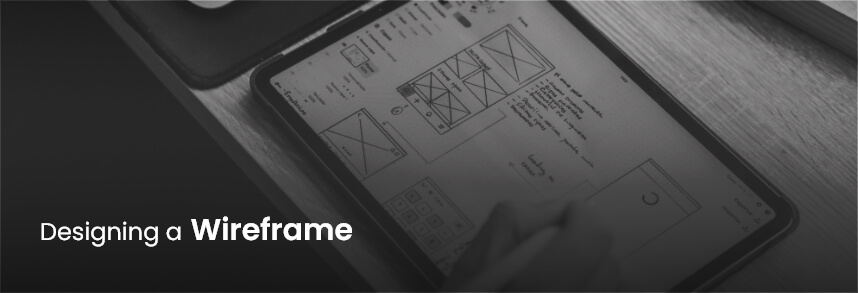
The third step is, Designing a wireframe:
Wireframing is like the backbone of the application. Because it reflects how a user will interact with the application, it includes all the elements & visuals that would be present in the final product of the application.
Wireframe consists of an information hierarchy usually prepared using pen & paper. Today, there are multiple tools available that can assist you in wireframing.
Wireframing is an important aspect of mobile application development stages. You can define the position of buttons, arrows, menus, navigation through pages, and a lot more. On top of this, a wireframe is iterable. Meaning, you can edit it as many times as you want while you proceed with the app development process.
In and all, a wireframe is a simple outline of the application that shows how an application will look when developed. It doesn’t contain any fancy colors or any fancy fonts. Nor does it contain any flashy images or graphics. If you want to include all those flashy elements, you can go for high fidelity prototyping.
You can use your wireframes to engage & convince your investors into your app project. You can rework the wireframe as soon as you approve a suggestion from the workmates.
Read more about wireframing and how you should make a wireframe in our blog written previously. We hope that it clears all your confusion in and around the topic.
Moving forward,
The next step is to select a technology stack for your project.
Let us be very clear, leapfrogging this step is very harmful. You can not randomly rely on the tech stack selection inspired by your competitors. There is a lot more behold in the technology stack selection process.
You can roll out a fully functional application only if you do this step right. You can build a scalable, robust, and cost-effective application with the technology stack.
Technology Stack is a collection of design tools, programming languages, software tools, and testing frameworks.
It can be divided into four major components, namely,
- Frontend development;
- Backend development;
- Development platform;
- Technical attributes like performance & security.
Frontend development is usually performed using HTML, CSS, and JavaScript. Backend development is often referred to as server-side programming. Backend development is performed using a combination of frameworks and programming languages.
The development platform is a platform where you will be launching your application. Hence it should have an integrated environment and should allow the integrating of third-party services.
Technology stack selection is an integral part of the mobile app development process. It assists developers in quick fixing of bugs and assures the application’s performance.
Again, we have mentioned everything in detail in our technology stack selection blog that you can refer to. Make a smart choice without relying only on online research.

The fifth step in the mobile application development process is prototyping.
Prototyping becomes quite easy if you know the designing chords. It’s an upgraded form of wireframing. It is a visual representation of elements that describes the application’s interactions precisely.
You can develop a prototype using tools like AdobeXD even without having any knowledge about coding. Just like wireframe, you can edit and rework a prototype too. Prototyping offers several advantages to you as an entrepreneur. Some of the benefits of prototyping are:
Prototyping is exercised during the early stages of app development, which means you have enough space to make amendments. You can experiment with ideas and define a design that suits the best for your project.
Identifying bugs early and thereby save resources and development time, also avoid making mistakes that can break your bank.
Additionally, you do not need to be an expert in developing a prototype for your project.
You can show it to your investors and show them how you are planning to deliver results.
It increases engagement between the teams and the ones who own it. It actually helps you in defining the user experience you wish to provide to your audience.
Prototyping is your dynamic interactive model that almost functions as a real product. You can read more on prototyping in our blog here. Feel free to connect with us in case you have any confusion.
The next step in the mobile app development process is,
Selection of app development company:
Well, we would say this is the toughest decision to make. With so many options available, it is really difficult to find a reliable application development partner. First, you need to decide whether you want to go for in-house development or out-source it to an app development company.
In-house app development has a different approach for selection altogether. You can hire individuals having the skill set that your project requires. Suppose you are going for in-house team development. In that case, you will need a team that consists of a project manager, sales manager, scrum masters, iOS and android developers, Designers, and QA engineers. You are free to hire a freelancer who works in their respective areas.
However, the selection of app development companies are completely different. You can begin your search by asking your friends and family for a reference. You can also check out online platforms such as Clutch. co and GoodFirms. Ensure that you prepare a list of convincing app development companies that work prolifically in your interest area. You can also attend conferences where professionals from various app development companies are participating.
By exercising the above steps, you can shortlist a few companies that you can trust with your project. Once you are done with this step, you can start these companies to send their work portfolio. This will give you an idea if the company can develop a product as per your expectation.
You can also inquire about the technologies they use and their approach to app development. Ask them for a project estimate and check whether it fits within your budget. If everything falls under your criteria, you can finally set a meeting and conclude the project commercials.
Read more about the app development company selection process in our blog.
Moving ahead with the mobile app development process,
The next important aspect of the app development phases is the project management & delivery milestone.
Project management helps entrepreneurs in accelerating their app development process.
It also helps entrepreneurs to scale up their process and adopt an agile methodology towards application development.
There are various other project management methodologies that you can adopt for your project. These methodologies are:
- Kanban project management;
- Scrum project management;
- Waterfall project management;
- Six Sigma project management;
- Lean project management;
- Agile project management;
- PRINCE2 project management.
All of these methodologies have their own advantages and suitableness. You can read our blog on project management, where we have specified each of these methodologies’ use cases. You can also connect with our team to discuss your use case in detail and grab a better understanding of it.
Additionally, there are project management tools that might help you in managing the work. Some of the popular tools are Trello, Basecamp, Asana, Zoho Projects, and Jira. Using project management tools and defining the project milestones helps you set up a clear pathway for app development progress.
It is advisable that you trace the milestones you have set for your project and see how far you have reached in the process. Project management and milestone tracing give you room to clear all the confusion in and around the project.
Marching forward towards the final product, the next step is,
Quality Assurance testing :
A mobile application development process is an iterative process. Developers write code, and the testers check for the quality. If anything is found out of the line, testers report to the developers, and the bug is fixed.
It is indeed very difficult to produce a bug-free product on the first go. The project is divided into sprints, and the quality team checks every sprint. It is upon the organization as well as the type of project that decides between automated testing and manual testing.
Quality testing ensures that each feature operates perfectly without giving rise to any bug. The product is tested under robust conditions and various working environments. The quality assurance team addresses all the abnormalities in order to release a functional application.
The following are the criteria under which the quality tester is responsible for checking the product.
- For testing functionality;
- For testing user data input;
- To check for messages & notification;
- To check the performance of the application;
- To check for device compatibility;
- For testing security concerns;
You can jump on to the blog that we have written on quality assurance during product development. It will give you an in-depth idea about the entire team’s roles & responsibilities during app development.
The ninth step in the development process is,
Usability testing:
Your prime motive is to develop an application for the users, isn’t it? But if you do not know how your actual users will interact with the product, you are still a step away from success. And hence the usability testing.
Usability testing is performed to evaluate the application’s user-friendliness. It is done to check whether the users navigate exactly in the same way as you have planned. You can decide how a user makes Heart Vs. Brain decisions and in which section do they interact majorly. By reviewing the results, you can optimize your application’s design accordingly. Also, if the results are positive, meaning, if your defined set of users have liked the product, you can expect the final released product to gain user acceptance.
Usability testing is different from user testing in only one parameter: user testing is done before the product is developed, while usability testing is performed after the product development.
It is quite easy and cost-effective to go for usability testing. You can decide your five users and perform usability testing. The three important elements of usability testing are:
- A facilitator: One who initiates the interview;
- Tasks: Actions that a user participating in the usability testing performs;
- Participant: One who takes the interview.
Also, there are various types of usability testing performed, namely,
Qualitative usability testing, Quantitative usability testing, Comparative usability testing, Explorative usability testing, Moderated testing, Remote usability testing, Unmoderated usability testing, Guerilla testing, Problem discovery, In-person usability testing, and Eye-tracking.
We have discussed each one of these in our blog on Usability testing. Please read to figure out how exactly it is performed.

Pressing forward, the next phase is,
Mobile application deployment:
Another important aspect of the mobile app development process is app deployment. It is the process of shifting the application’s template to a temporary location along with the code & resources.
The platform you deploy your application plays a major role in application execution. And hence, you need to be extra careful while making the selection.
The available deployment approaches are Native deployment, Web deployment, Hybrid deployment, and Mobile Enterprise Application Platform as middleware.
Whichever deployment approach you select from the above, the platform should be accessible by the users. It should have the capacity to handle the storage and run as a middleware.
We have listed all the information and things that you should expect from the application deployment platform in our blog. It will help if you read more on this topic in the blog. Come back to us if you need any further assistance.
We are nearing the end of the mobile app development process, and the next step is, Feedback and Iteration:
As we have mentioned above, the app development process is an iterative process. At every stage, you will receive feedback & suggestions to improve the application’s functioning.
However, not all the feedback needs your attention. There are limitations when it comes to releasing updates. The users do not welcome frequent updates. You need to identify possible threats and resolve them while you plan to release an app update.
Feedback and interaction help you in empathizing with the customers. You can know your application’s drawbacks from the feedback received from the users. Feedbacks allow you to engage with the customers and satisfy their needs.
You can reduce the bounce rate drastically by collecting feedback and addressing the issues in a timely manner. Feedbacks can be used to identify user personas and thereby delivering a more customized browsing experience.
Feedbacks can be collected either by a survey form or through email marketing. You can also run a campaign on various social media platforms and find out what the users think about the application.
Read more about the importance of Feedback & iteration and its role in the mobile app development process in the blog.
The last two steps are more about having the knowledge about the topic than actually implementing it.
The second last step in the mobile app development process is to know about
Cost variation:
Cost variation is a scenario when the final cost of app development varies from the estimated quotation. There are various factors affecting the final costing, and we think you should know about them in advance.
We will describe the factors in the next section. However, you can read more about them in detail in our blog on factors affecting cost variation.
- Team composition;
- Application type & features;
- Mobile app development process type;
- Features & functionality;
- UI/UX designing;
- Support and Maintenance;
- Application Marketing:
- Application improvements;
- Location of the app development company.
All of these factors may lead to cost variation. However, you should discuss all the aspects with the prospective development team in advance in order to avoid any major variations.
Lastly,
Why should you focus on good application design?
You can not engage with your customers if your application doesn’t have a unique design, period. You and your team have to rigorously think through the application’s concept and come up with a design that lures customers.
A good design can grab customers’ attention and thereby retain them over the platform. It entices the customers and glues them to the screen. This being said, you need to impress your users on every screen. A good design has the power to increase business sales, increase user attachment, engage with reviews, and a lot more.
To ensure a good design, you need to select an experienced team of designers. Otherwise, a novice designer may turn it into a mess. A designing company that has knowledge about the color combinations, symbols, placements of features, and elements of visibility.
We have written an entire blog on why you should focus on good design and how it will benefit your business. We also provide a complete package for application development from the first step to the last. You may connect with your team and know more about the cost.
Conclusion:
We have tried to cover all the nitty-gritty details that we practice during our projects. We hope this guide helps you in developing your dream application in the coming years. Our approach is goal-oriented, which means we try to cover every need of our clients. We listen to them and craft a customized solution for them.
We are a reliable application development company, and you can connect with us for your next app development project. Thank you!


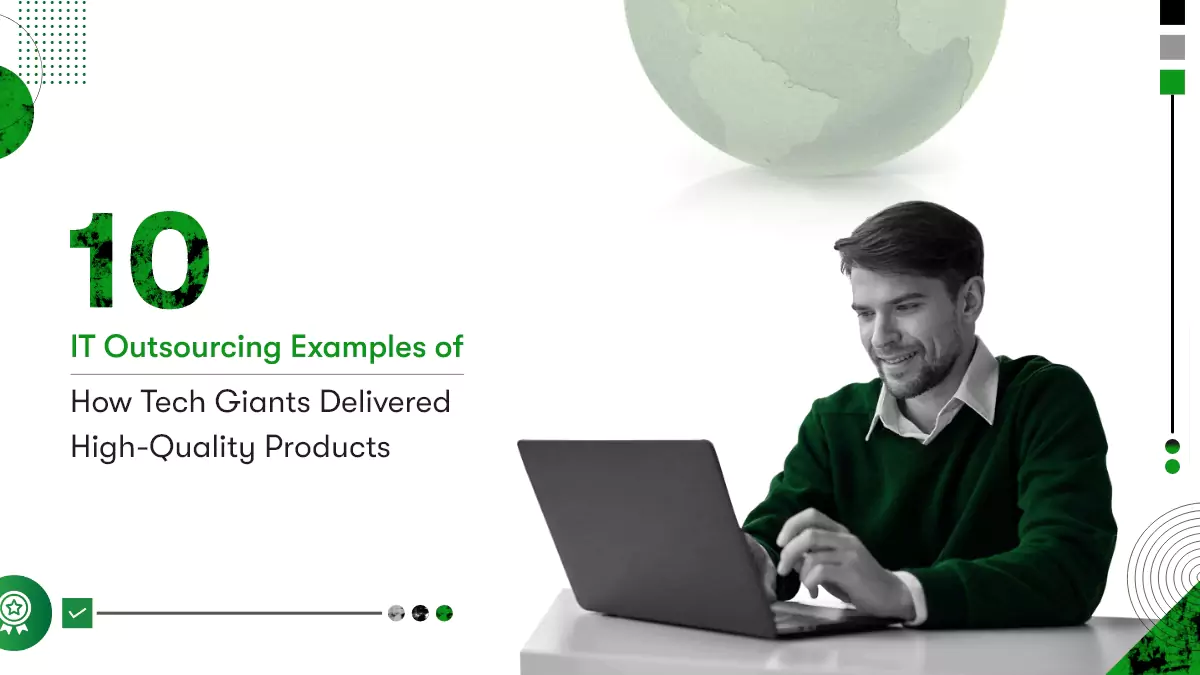

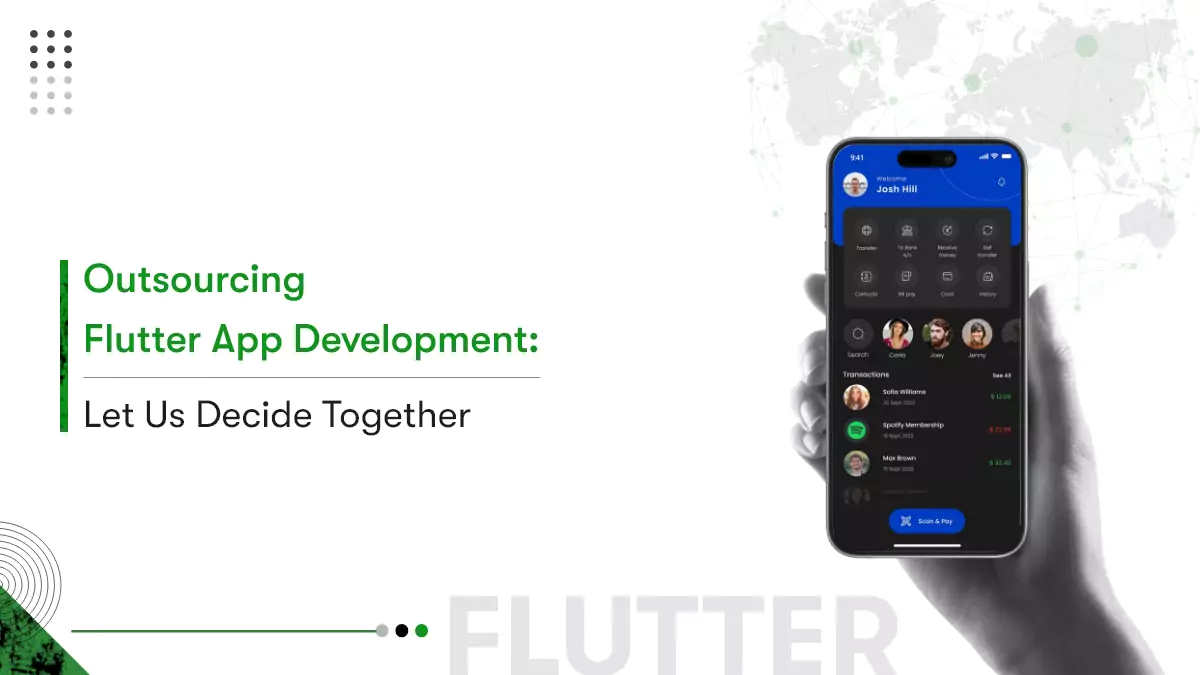
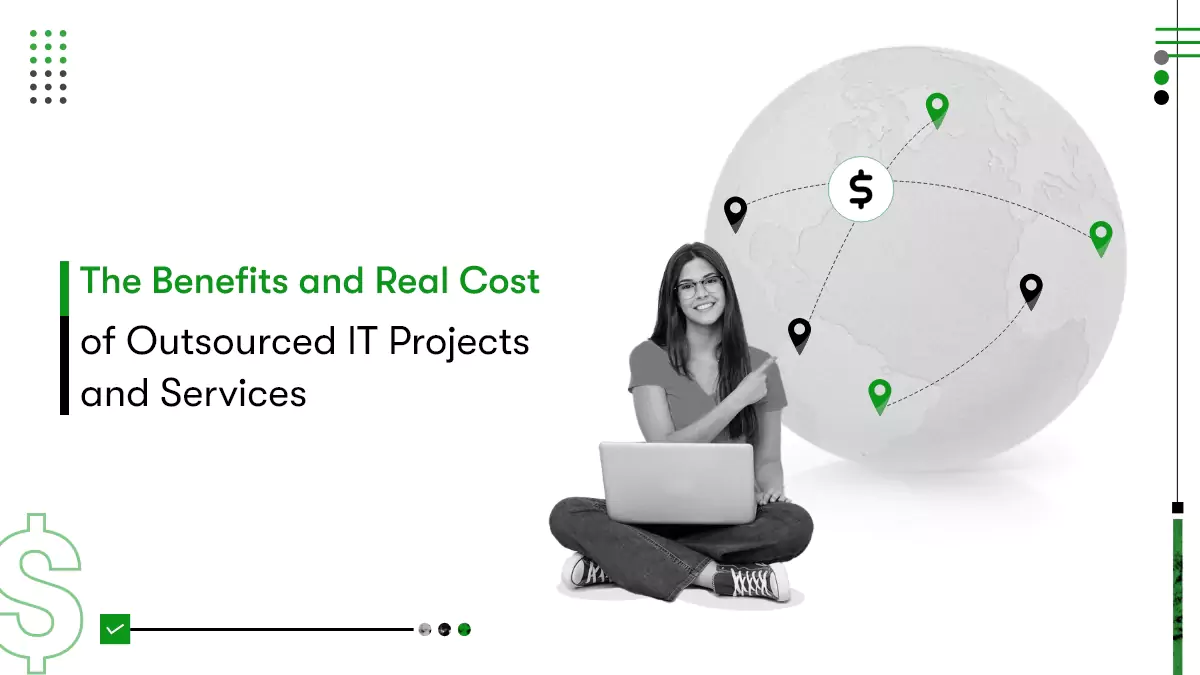

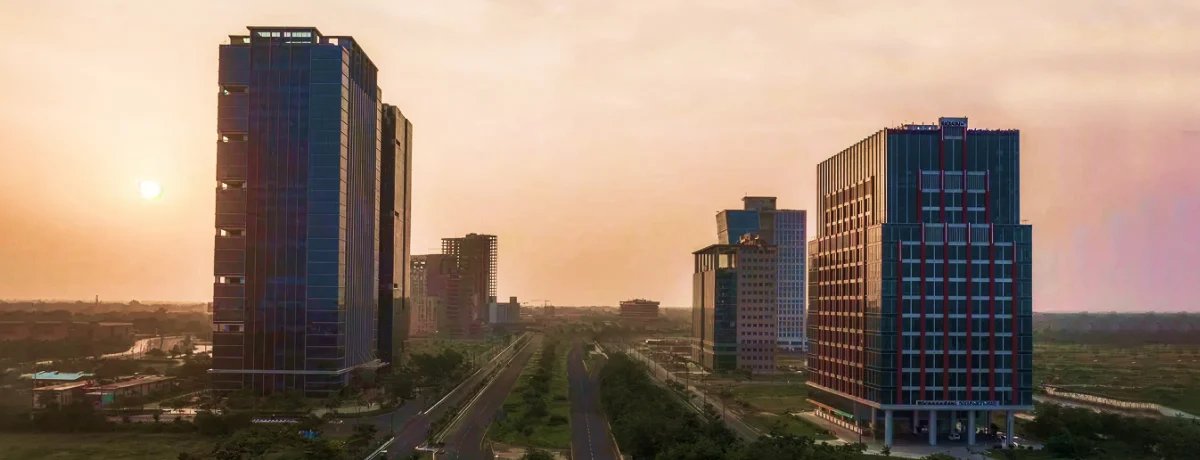




 Contact Information
Contact Information